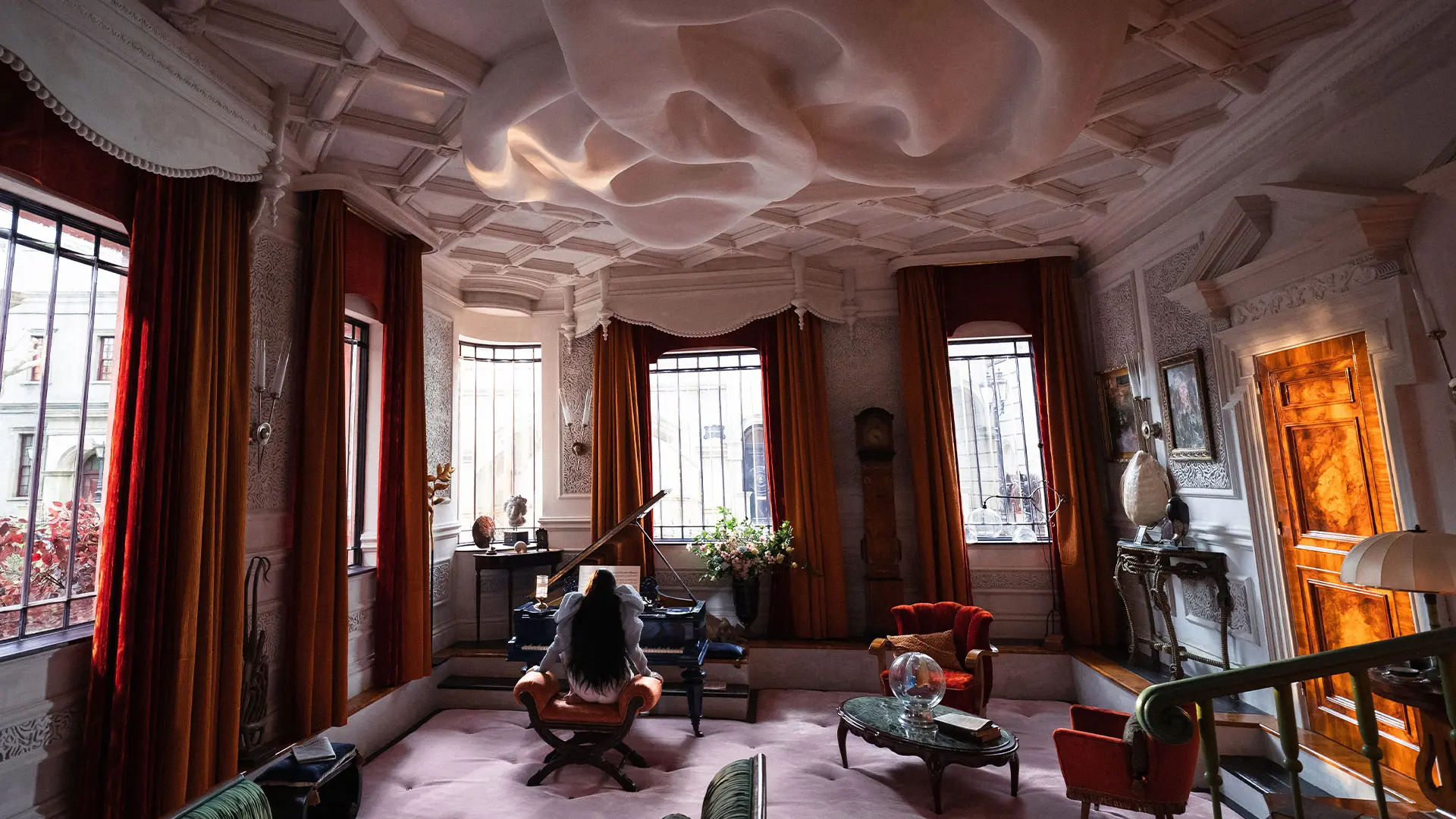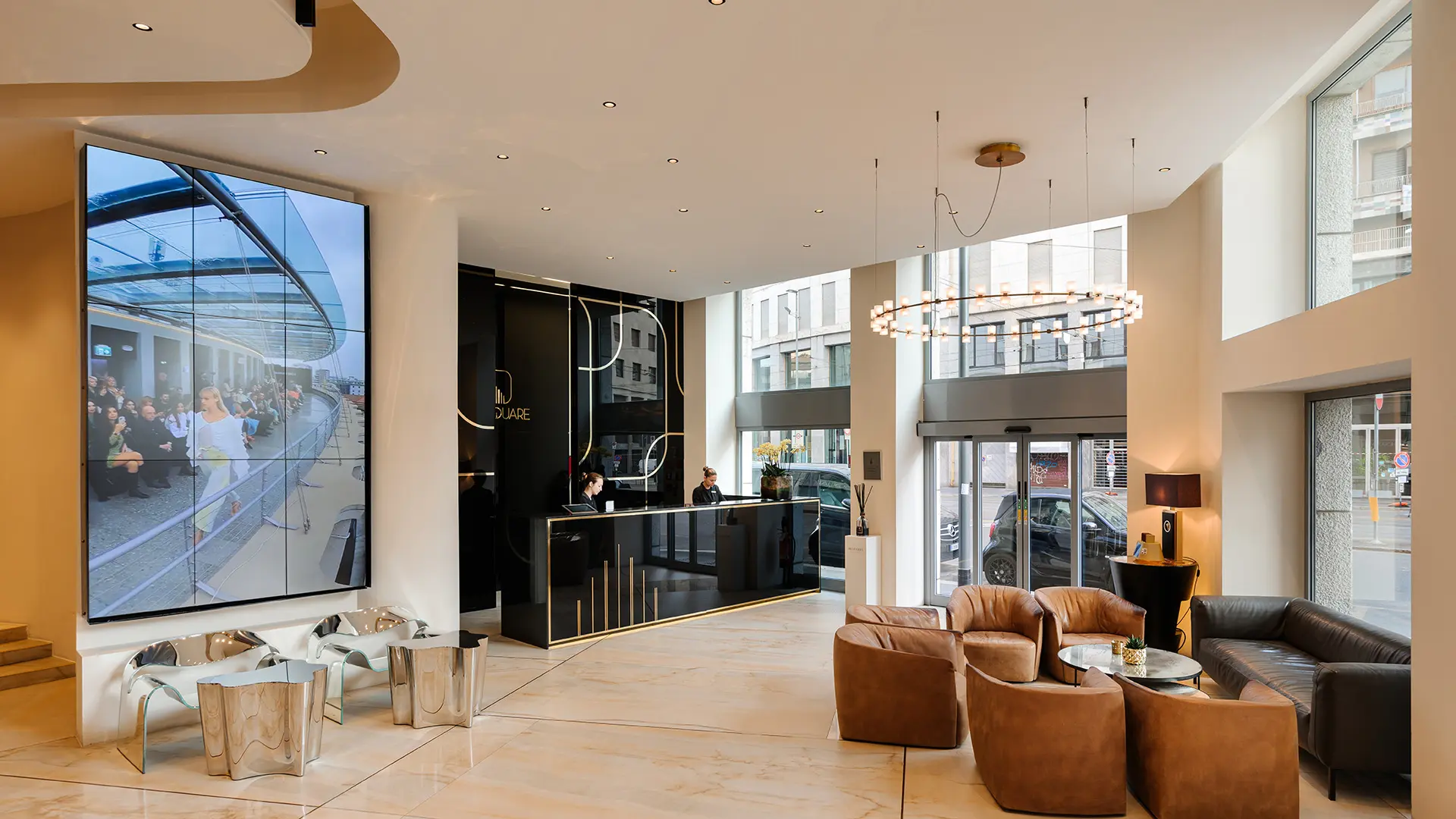In partnership with MiCodmc, a selection of establishments ripe for discovery during the 64th edition of the Salone del Mobile.Milano, from 21 to 26 April 2026
Oscar 2024: three films (plus one) for design buffs

Emma Stone in POOR THINGS. Photo by Atsushi Nishijima. Courtesy of Searchlight Pictures. © 2023
Four films and four disparate imaginaries - Zen Japan, early twentieth century Europe, modernist California, the Western frontier - are different examples of design, set decor and locations in the service of different filmic poetics
Perfect Days, directed by Wim Wenders
As if mirroring the movie’s plot, everything starts from a banal commission that takes an unexpected turn and leads to a splendid, much-loved award-winning film, nominated for a foreign-language film Oscar. The municipality of Tokyo asked Wim Wenders to make a series of short films to promote the use, still sparse for cultural reasons, of the futuristic new public toilets designed by sixteen different starchitects. Long a lover of Japan and its cinema, Wenders sensed he could turn the idea into a feature-length film. Tokyo’s public toilets are masterpieces of design and interpretation of function. Kengo Kuma created a mini-village of five wooden huts. Shigeru Ban, a toilet with transparent glass walls that allow it to be checked for cleanliness and then turn opaque when the bathroom is occupied. Toyo Ito imagined them as mushrooms. The Wonderwall studio envisioned concrete blocks recalling Neolithic settlements. Finally, Tadao Ando devised a concrete portico that invites entry and embodies a democratic principle. It is among these jewels of functional architecture that Hirayama (Koji Yakusho, duly awarded best actor at Cannes) spends his days as a toilet cleaner for the TTT (The Tokyo Toilet project), a consortium that actually exists. His life appears regular, monotonous and empty. However, emptiness is a central element of Zen philosophy through the ideogram mu, which indicates acceptance of life, suspension of judgment. Hirayama lives on subtractions (his minimalist house), repetitions (the classic rock cassettes he listens to on the way to and from work) and variables (encounters with people, trees, sunsets that kindle excitement amid apparent monotony). The splendid Chaplinesque ending in close up affirms how the meaning, the intensity of existence is not around us - there is very little talk in the film - but simply lies in “being there”.
Povere creature!, directed by Yorgos Lanthimos
Yorgos Lanthimos’ phantasmagoria about a “female Frankenstein”, based on the novel by Alasdair Gray, goes from a Golden Lion in Venice to nominations at the Academy Awards. It makes visual grandeur and magniloquence (such as the red trees alluding to the inside of the lungs and the circulatory system) a substantial feature and therefore gives a key function to the settings, locations and production design by James Price and Shona Heath, Oscar nominees and favorites. “Poor Things!” is above all a spatial phantasmagoria that moves between London, Lisbon, Alexandria and a Paris with Art Nouveau interiors and exteriors. There are also some details anachronistic for the 1930s, such as the Brutalist inspiration and exposed concrete of the operating theater. It is also a case of a school of set design that is not limited to a decorative or illustrative role but decisive in conveying meaning. The ship follows the image of the caged animal because, as Price explains, “The big marble floor shows a tiger about to kill a goat and there are caged animals in the pictures (...) The chandeliers are all ridiculously big – it was supposed to feel claustrophobic.” The sensation of the absurd and uncanny embodied in the film also comes from the inclusion of one-off and out-of-scale elements, such as the enormous chair and the industrial-type lamps in a dining room otherwise furnished in impeccable English style.
Barbie, directed by Greta Gerwig
Mattel spared no expense when it entrusted Greta Gerwig with the operation of rebranding the most famous doll of all time for an age when plastic and patriarchy have decidedly lost their appeal. The production has the gigantism of classic Hollywood - there is a (fake) rumor that it used up all the world’s supplies of pink paint - and the marketing is a relentless war machine. Then it could be insinuated that the mountain has given birth to a movie mouse, since the farcical tone is accompanied by a dramaturgy with all the depth of doomscrolling and a constantly intrusive didacticism. So it is worth focusing on the excellent work of translating the “Barbie house” as an object into scenography by the production designer Sarah Greenwood and the set decorator Katie Spencer. Beyond the technical measures, such as reducing the proportions of the houses by 23% so that the characters appear out of scale, and the artistic inspirations (the all-surface swimming pools obviously draw on David Hockney), Barbieland recalls the ideal cities of Californian consumerism, such as Palm Springs, and the unreal production design the metaphysics of Hollywood’s golden age, the symbolic Venices reconstructed in the studio and represented by a swimming pool to act as a backdrop for Fred Astaire. Then the dreamhouses are directly descended from the great matrix of Californian modernist architecture, Richard Neutra’s Kaufmann House (1946), also in Palm Springs, resulting in an extremization due to the complete removal of walls and doors. The other world that has abolished the organic where “life in plastic” takes place finds formal and ideological antecedents in past American utopias, all artificial.
Strange Way of Life, directed by Pedro Almodóvar
Surprisingly excluded from the short films nominated, Almodovar’s latest movie draws on the masterpiece “Dolor y Gloria” for the theme least explored in the cinema, mature homosexual love, and interprets it as a genre divertissement: the Western. It is the West reconstructed in southern Spain, as in the movies by Sergio Leone and other Spaghetti Westerns, as well as not being naturalistic but authorial (on the US - Mexico border). So Almodovar turned to Anthony Vaccarello and the Maison Yves Saint Laurent for the production design and costumes, while in the settings he preferred the imaginary to mere realism, furnishing the ranches in garish, camp colors with embroidered sheets and paintings by Georgia O’Keefe. The work of making latent queerness explicit in the classic Western is largely a matter of the interior decoration.


 Stories
Stories








